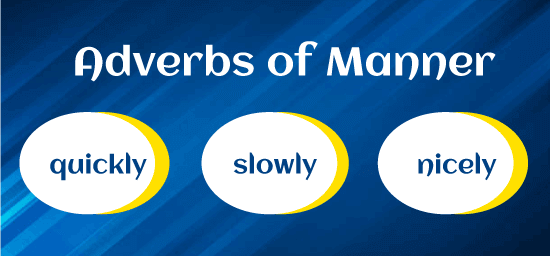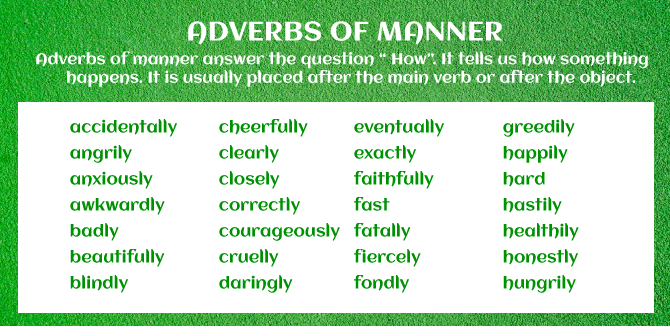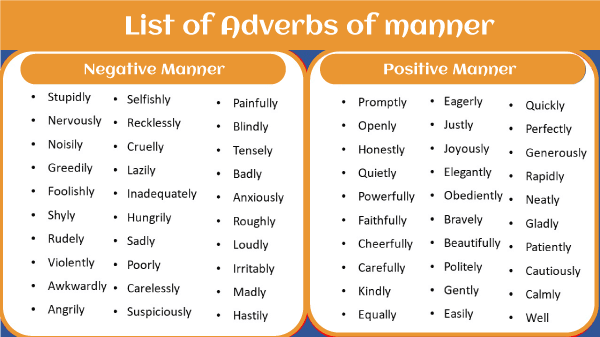Adverbs of MannerIntroductionAn adverb of manner in basic grammar is an adverb (including such quickly or slowly) that defines how and in what manner an action represented by a verb is performed. All of these are known as manner adverbs or manner adverbials. 
The majority of manner adverb is generated by attaching -ly to adjectives, although there are few notable exceptions (such as well). In majority way adverbs' comparative and superlative forms are created along more (or less) and most (or least), accordingly. Adverbs of manner are commonly seen after the verb or at the ending of the verb phrase. "It is adverbs of manner which are most flexibly changed by other adverbs (usually of degree)," explains Rodney Huddleston. She spoke very gently. (Huddleston 1984). 
What are adverbs of manner?Adverbs of manner define the manner in which something occurs. It is conceivable, for instance, to walk or run at varying speeds. Adverbs of manner are phrases used to express walking or running at different speeds (for example, rapidly or slowly). They help readers in gaining a better understanding of how a written scenario is unfolding. 
Examining the sentences below will help you learn how well these adverbs alter the entire meaning and structure of statements in which they appear.
There are a few guidelines to consider when it comes to adverbs of manner:

Examples of Adverbs of MannerThe adverbs of manner are highlighted/ bolded in every instance for ease of recognition.
A manner adverb can never be used in between a verb as well as its direct object. The adverb should come prior to the verb or at the ending of the phrase. Examples
If in the sentence there is the preposition prior to the verb's object, the adverbs of manner might be placed either prior to or following the prepositions. Examples
Adverbs of manner must always occur right after verbs with no object (intransitive verbs). Examples
These common manner adverbs are nearly always placed immediately just after the verb: well, badly, hard, and quickly. Examples
If the sentence comprises of more than one verb, the positioning of the adverb is significant. If the adverb comes before or after the primary verb, it solely changes that verb. When an adverb follows a clause, it alters the entire action stated by the sentence. For instance, have a look at the following examples;
UsageTo emphasize a verb + object, an adverb of manner is often used before it. Examples
Few authors use the adverbs of manner at the start of a sentence to draw the attentiveness and pique our interest. Examples
Next TopicAuxiliary Verbs
|
 For Videos Join Our Youtube Channel: Join Now
For Videos Join Our Youtube Channel: Join Now
Feedback
- Send your Feedback to [email protected]
Help Others, Please Share










